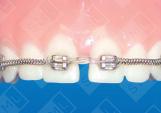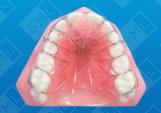
Closing Space
Location
Tongue thrusting, tooth size discrepancy, periodontal disease and posterior bite collapse are just a few of the factors that can cause a patient to have excessive space. Only when you identify the cause of the problem can you properly select an appliance that will close the space and allow you to keep it closed.
The most common result of a tongue thrust is the creation of an anterior open bite with flared anteriors. Although the etiology of a tongue thrust is often debated, the need to address the problem early is not. If a thrusting pattern remains past the age of 4 to 5, there is an increasing likelihood that this pattern will remain. When an appliance is used to close excess space caused by a tongue thrust, it is best to choose a design that also addresses the thrusting problem. If this is not done, tongue forces will just cause the problem to re-occur.
Nocturnal grinding or bruxism can break down the protective mechanisms provided by the posterior occlusion. When this occurs, undue forces are placed on the anteriors causing them to flair. Many of the appliances shown in this section can be used to gather the anteriors. However these appliances should only be used after the loss in vertical dimension has been corrected. This is usually accomplished through a combination of orthodontics and restorative therapy.
Periodontal disease can also be a factor causing anterior flaring and the creation of excessive space. An anterior retraction appliance should be used after periodontal therapy is completed. In these cases, it may be necessary to splint the teeth together after retraction and space closure is completed.
Managing space problems caused by a tooth size discrepancy are usually handled by combining small amount of tooth movement with some form of cosmetic restorative therapy. The key to success here is not to impinge upon the space needed for the tongue. Therefore, one must exercise caution when using any form of retraction mechanics to close the excess space.
When choosing an appliance, it is important to remember that fixed appliances are capable of moving the teeth bodily, while removable appliances tend to tip teeth. As with most SML appliance designs, combinations of different components are possible to accomplish any given objective.
Select another Appliance Category












